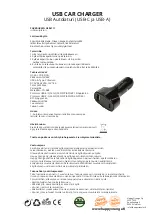
71
Positionnement derrière les rayons
Behind-the-spokes placement
Operation manual - geodyna 2300 - ZEEWB700B
9.3 Equilibrage du balourd
mesuré
y
La touche START.
La lancée de mesure est effectuée.
Pendant la lancée de mesure, seul un segment du
milieu de chaque afficheur numérique est allumé
(Fig.
60)
.
La mesure terminée, la machine s’arrête
automatiquement et la roue est freinée jusqu’à
l’immobilisation et la
Fig. 61
est affichée.
L’affichage indique le balourd mesuré pour chaque plan
de correction et la direction d’orientation correspondante
sur les afficheurs de direction respectifs.
Placer la masse adhésive sur le côté gauche du
disque de jante
y
Avant de fixer les masses adhésives, nettoyer
l’emplacement de fixation.
y
Placer la masse adhésive sur le côté gauche du
disque de jante, suivant la description du § 8.2.
Fixation d’une masse adhesive cachée
y
Tourner la roue, de sorte qu’un rayon soit situé
directement au milieu au-dessus de l’arbre principal
(Fig. 62, flèche)
.
y
Dans cette position, appuyer sur la touche de
fonction pour mode d’équilibrage
(Fig. 58, pos. 1)
.
La grandeur du balourd divisée du mode de
positionnement derrière les rayons est affichée pour
la première masse adhesive cachée du plan de
correction droit
(Fig. 63)
; 15 g dans cet exemple.
Remarque
La petite flèche située à gauche dans la Fig. 63 indique
le sens de rotation qui permet d’atteindre au plus vite
la position de fixation de l’autre masse adhésive.
y
Si nécessaire, orienter la roue conformément à la
paire de flèches à droite jusqu’à la première position
de correction et la bloquer en appuyant sur la pédale
de blocage.
y
Avant de fixer les masses adhésives, nettoyer
l’emplacement de fixation.
y
La roue étant dans cette position, fixer la masse
correction appropriée à l’emplacement
correspondant (15 g suivant l’exemple détaillé à la
Fig. 63
).
La grandeur du balourd divisée du mode de
positionnement derrière les rayons est affichée pour la
deuxième masse cachée du plan de correction droit
(Fig. 64)
; 5 g dans cet exemple.
y
Fixer la deuxième masse d’équilibrage derrière le
rayon de la même manière.
9.3 Correction of measured
unbalance
y
Press the START key.
The measuring run is carried out.
During measurement one middle segment is read out
on each of the digital displays
(Fig. 60)
.
After measurement the machine stops automatically,
the wheel is braked down to standstill and the display
is as shown in
Fig. 61
.
This shows the unbalance measured in each correction
plane and the respective direction towards the correction
position on the direction indicator associated with the
relative correction plane.
How to fit adhesive weights on the left side of
the rim disc
y
Clean the fitting position before attaching the
adhesive weights.
y
Fit adhesive weights on the left side of the rim disc
as described in § 8.2.
How to fit a hidden adhesive weight
y
Rotate the wheel so that a spoke is centred relative
to and above the main shaft
(Fig. 62, arrow)
.
y
In this position press the function key for balancing
mode
(Fig. 58, item 1)
.
The divided amount of unbalance of the behind-
thespokes placement is read out for the first adhesive
weight in the right correction plane
(Fig. 63)
; in the
example 15 g.
Note
The small arrow on the left-hand side in Fig. 63 indicates
the shortest way to index the position of the other
adhesive weight.
y
If necessary, index the wheel to the exact position
for correction in the first correction position and hold
the wheel in this position with the main shaft lock.
y
Clean the fitting position before attaching the
adhesive weights.
y
Fit a suitable weight in the correct fitting position (in
the example 15 g,
Fig. 63
).
The divided amount of unbalance of the behind-the-
spokes placement is read out for the second adhesive
weight in the right correction plane
(Fig. 64)
; in the
example 5 g.
y
Fit the second weight behind the spoke in the same
way.
Summary of Contents for geodyna 2300
Page 1: ...Operators Manual Car Wheel Balancer ZEEWB700B geodyna 2300...
Page 124: ...Notes...
Page 125: ...Notes...
















































